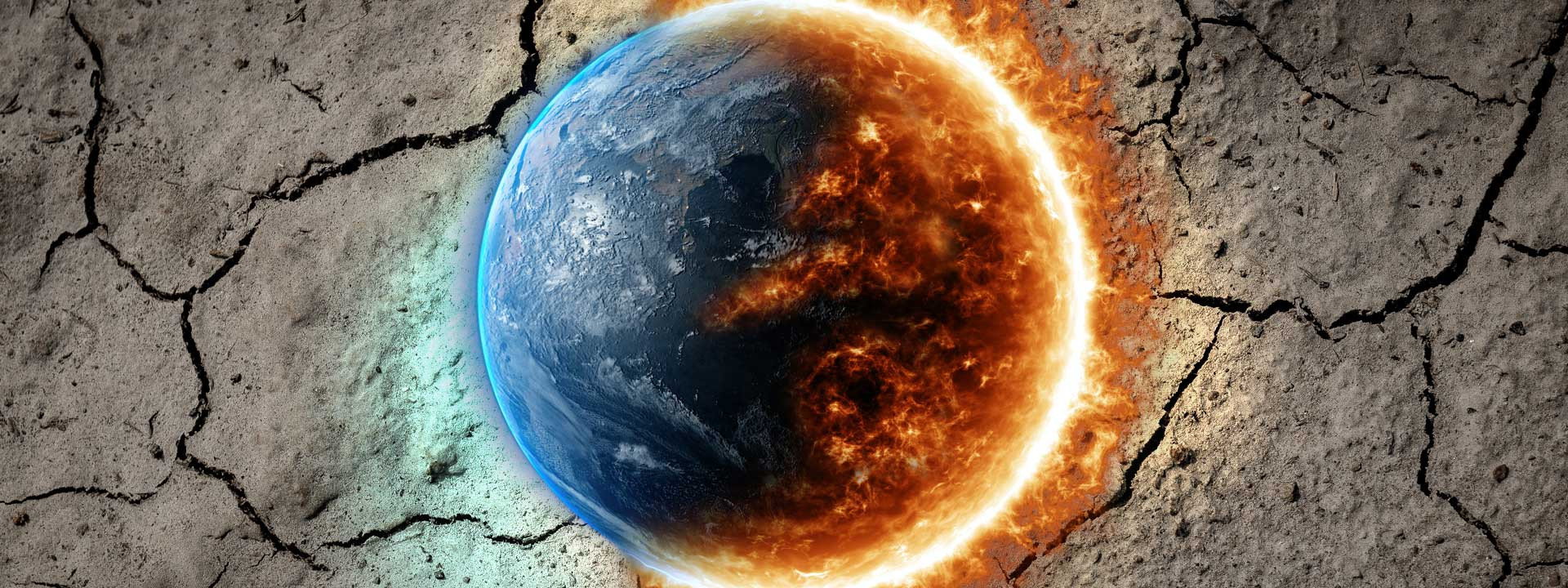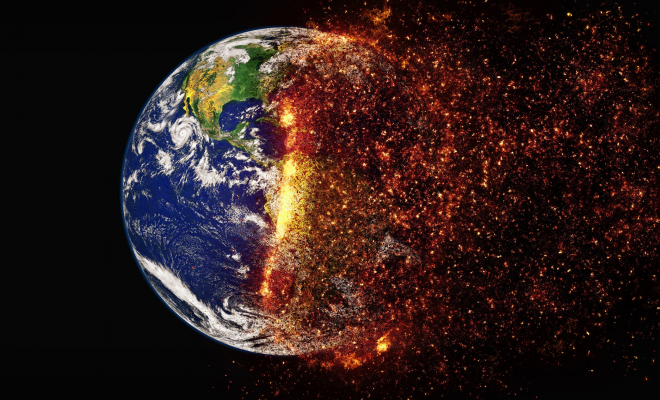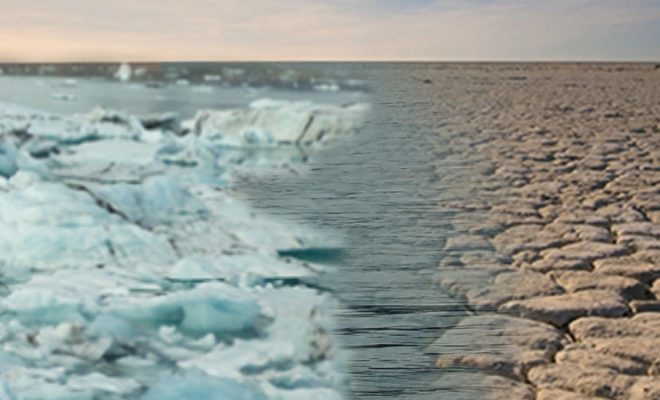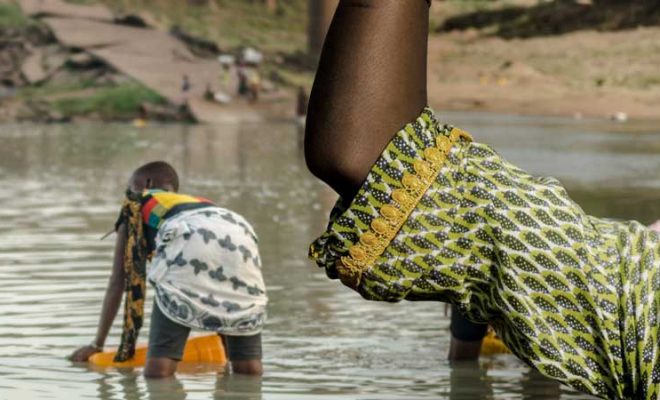
The cycle of humankind’s most complex and extensive scientific work ever carried out has been completed. With the publication of the Synthesis Report, the IPPC concludes its Sixth Assessment Report (AR6), the first part of which was submitted in the summer of 2021.
The acronym IPCC stands for Intergovernmental Panel on Climate Change, a United Nations body created in 1988 by the United Nations Environment Programme (UNEP) and the World Meteorological Organization (WMO). It involves hundreds of specialists who evaluate the scientific knowledge on climate evolution published worldwide. Its main objective is to bring science closer to governments so that they can act in the most appropriate way possible and thus make progress in mitigating and adapting to the effects of global warming.
Since 1988, the IPCC has produced five comprehensive assessment reports. AR 6 raised many expectations since its predecessor, AR 5, was the scientific basis for addressing climate change at COP 21 in Paris in December 2015. It resoundingly corroborates the anthropogenic change caused in the climate that scientists began to detect in the 1970s. Moreover, it reaffirms with overwhelming evidence the urgency of action to curb global warming, the main driver of the crisis.
Each assessment report consists of three parts. In the case of AR6, it focuses on the physical base of climate change (published in August 2021), the vulnerability and adaptation report (published in February 2022), and the mitigation report (published in April 2022).
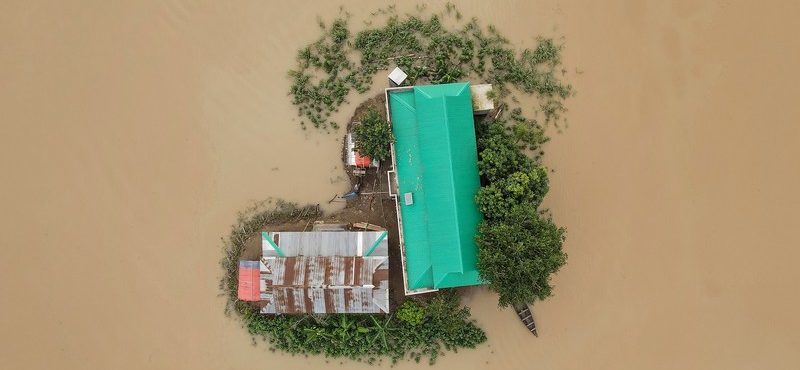
We are not on the right track to reduce climate change or adapt to its disastrous scenarios.© Photographer/ Muhammad Amdad Hossain/WMO
The most significant collective scientific expression, understandable to all
The Synthesis Report is designed to be understood by everyone, from governments to the public. As such, the document is written in a non-technical manner and seeks to provide guidance and valuable data to those who will then have to formulate appropriate governance and communication policies to address climate change.
A Core Writing Team (CWT) comprising 39 specialists is responsible for writing the texts and designing the graphics. The list of AR6 editors from universities and research centers worldwide can be found here.
These writers have strived to create concise and understandable infographics, emphasizing the use of necessary resources to make an impact. And they have succeeded. There are seven graphics in the report that should cover the walls of government offices, media newsrooms, schools, and even homes.
All infographics call for urgency. We have selected some that express resounding calls that must be answered immediately.
The problem ALREADY exists
Climate change is already causing widespread and substantial death, suffering, and loss in almost every aspect of human life. The impacts on future generations depend on the decisions we make NOW. It is no longer an issue to be resolved in the future. The longer we procrastinate, the greater the differences and, consequently, the greater the uncertainty. Figure 1 is sufficiently self-explanatory
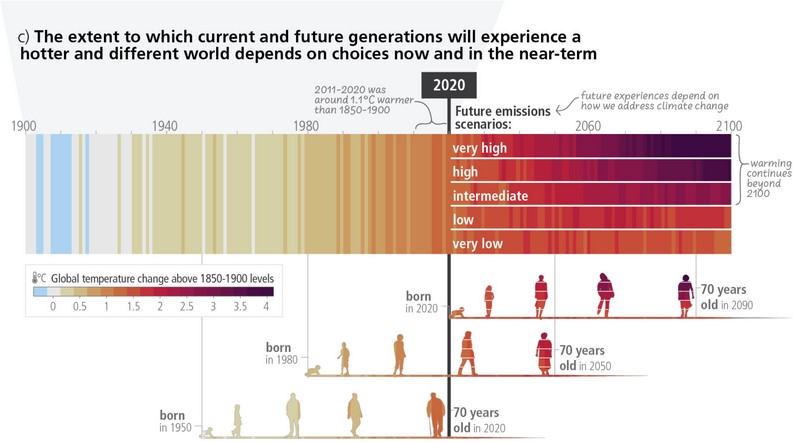
Figure 1. Observed changes in the Earth’s global surface temperature between 1900-2020 and projected to 2021-2100 compared to the 1850-1900 period. They illustrate how the climate has already changed and will change over the lifetime of three generations: those born in 1950, 1980, and 2020. Future projections (2021-2100) of global surface temperature changes are shown for five emissions scenarios: very low, low, intermediate, high, and very high. Note the color of the human icons corresponding to that of the temperature changes (red scale).
Impacts are severe on health, water, and food security
Climate change directly affects our health, water, and food resources. Exposure to heat waves will increase the risk of mortality or exposure to high ambient temperature conditions. Figure 2 shows the geographic distribution of these risks and the likelihood of extremely humid heat waves that reduce labor productivity and increase morbidity and mortality in humans and animals. It is a risk that is maximized in many densely populated regions.

Figure 2. Human health risks. Above, you can see the days of exposure per year to hyperthermic conditions, representing a mortality risk due to air temperature and humidity. The maps show three warming scenarios (1.7°C-2.3°C / 2.4°C-3.1°C / 4.2°C-5.4°C) compared to the historical period 1991-2005.
Threat to food security
Increasing periods of drought and their recurrence, coupled with alternating torrential rains, will decrease agricultural productivity. Figure 3 represents the projected regional impacts caused by crop responses to changes in temperature, rainfall, solar radiation, humidity, wind, and increased CO2on growth and water retention in currently cultivated areas. It is essential to bear in mind, as the IPCC warns, that the models assume that irrigated areas are not limited by water, nor have they taken into account possible pests and future changes in agricultural technology, all of which add further uncertainty to projections that predict drastic losses in productivity under high warming scenarios.
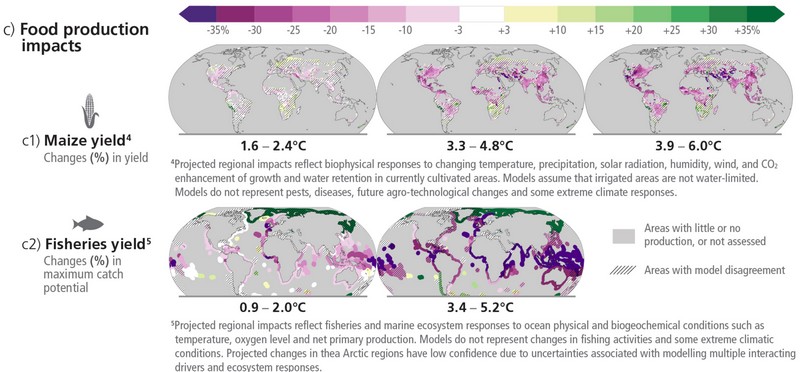
Figure 3. Impacts on food production. Above the percentage scale of losses and gains. The first three maps show maize as an example for 2080-2099, compared to 1986-2005, at three levels of warming: 1.6°C-2.4°C / 3.3°C-4.8°C and 3.9°C-6.0°C. The maps represent the impact in growing regions (more than 10 ha). The bottom two maps show the maximum fishery catch potential for 2081-2099 compared to 1986-2005 under two warming scenarios: 0.9°C-2.0°C and 3.4°C-5.2°C. They reflect the responses of fisheries and marine ecosystems to physical and biochemical ocean conditions, such as temperature, oxygen level, and net primary production. Projected changes in Arctic regions have a low confidence level.
We are not moving at the right speed, and the window is closing
In each of the last COPs, it has been denounced that we are not taking the necessary actions to mitigate the harmful consequences of global warming. The synthesis report is very clear: the goals of the Paris Agreement need to be revised.
Figure 4 presents the most disturbing infographic. Limiting warming to 1.5°C and 2°C implies rapid, profound, and, in most cases, immediate reductions in greenhouse gas (GHG) emissions. However, the divergence between current policies and those needed to stay within these warming levels is striking.
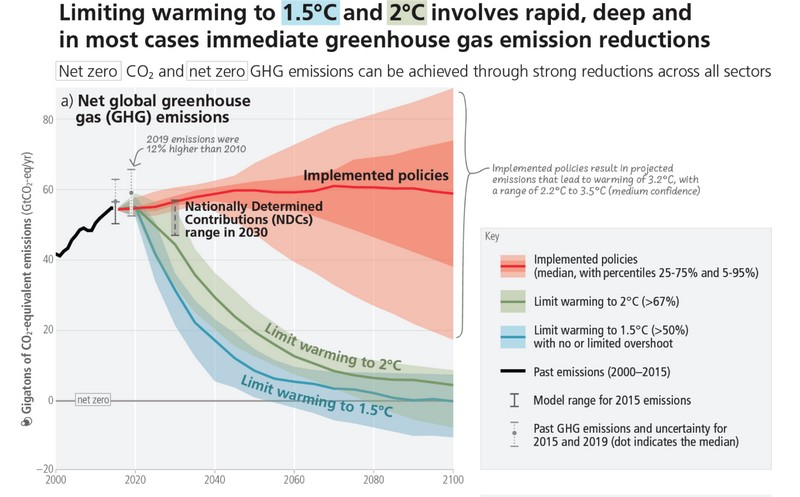
Figure 4. The evolution of global GHG emissions up to 2100, if current policies are followed (red line), compared with those required to stay within 2ºC (green line) and 1.5ºC (blue line). The range shaded in red indicates the result of projected emissions leading to warming between 2.2ºC and 3.5ºC.
There are no precedents, and uncertainty is high, but there are solutions
The great challenge of this synthesis report is not scientific but political. For decades now, science has been working in depth and denouncing. But science must be the guide for a society that is increasingly aware of and anxious about the future ahead.
The stakes are high, and the urgency of action becomes more urgent as time passes. We have less than seven years left to account for the SDGs, and for the moment, we are still in an unprecedented situation, with many questions and few answers.
At COPs and high-level meetings, such as the recent UN Water Conference, governments show that they have known for decades what needs to be done, but year after year, agreements do not translate into tangible, practical action. The goal for ALL is gas and pollution reduction, and hopefully, the forcefulness and clarity of AR6 will trigger our reaction. But, unfortunately, there won’t be another IPCC report until almost 2030 – will we have made it by then?


